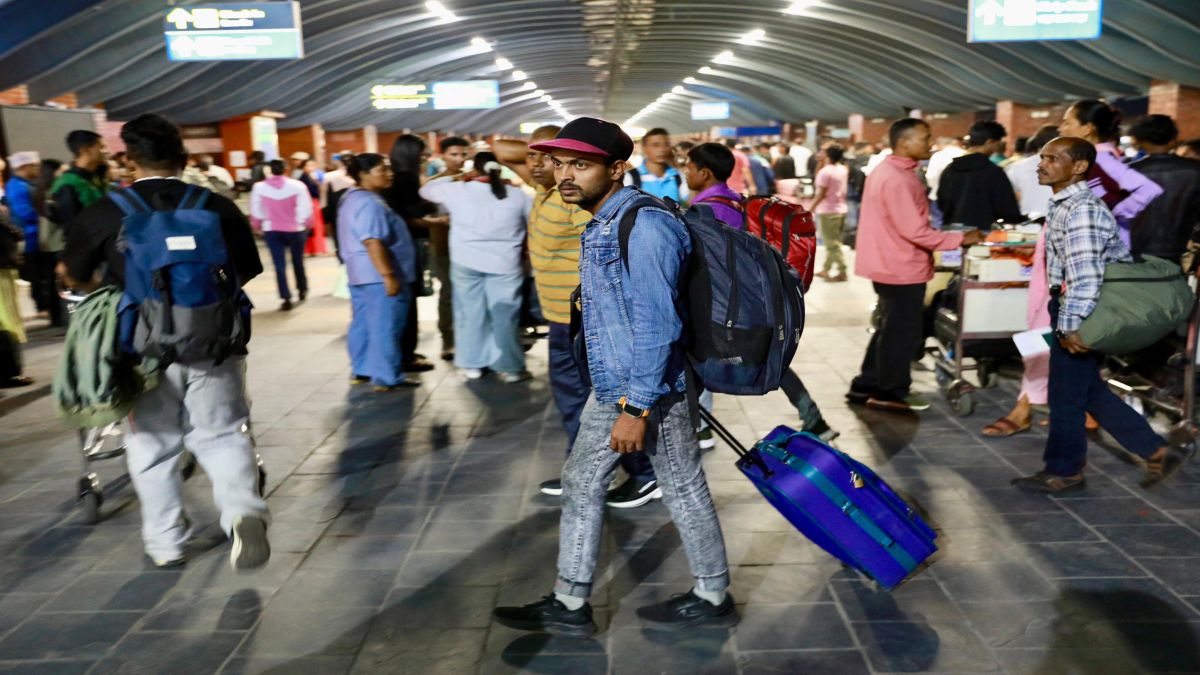Russia has begun conducting drills with its Yars intercontinental ballistic missiles. Putin has stated his aim to make the Yars system part of Russia’s “invincible weapons" and the mainstay of the ground-based component of its nuclear arsenal. “In total, more than 3,000 military personnel and about 300 pieces of equipment are involved in the exercises,” the defence ministry said in a statement on the Telegram messaging service. The drills involve the Strategic Missile Forces comprehensive control checking of the Omsk missile formation together with a command and staff exercise with the Novosibirsk missile formation equipped with the Yars systems. During the exercises, the Yars mobile systems will conduct manoeuvres in three Russian regions, the ministry said, without identifying the regions. “Also, strategic missilemen will carry out a set of measures to camouflage and counter modern aerial reconnaissance means in cooperation with formations and units of the Central Military District and the Aerospace Forces.” The exercises come in the backdrop of Russia’s war with Ukraine. Let’s take a closer look at the Yars intercontinental ballistic missiles What are they? Only a few confirmed tactical and technical characteristics of the Yars system are available.
As per Eurasian Times, it was developed by the Moscow Institute of Thermal Engineering.
According to Military.com, the Yars missile is called SS-29 by NATO. An upgraded version of the Topol-M ballistic missile, the RS-24 was first tested in 2007. According to Army Recognition.com, the Yars’ test fire was from Russia’s Plesetsk in the northwest. Its target was in the Kura firing range in the Far East. The missile weighs around 49,000 kg and is 20.9 metres long. The missile relies on a guidance upgraded system of the inertial and Glonass system used in the Topol-M missile. Its accuracy is around 250 m Circular Error of Probability (CEP). [caption id=“attachment_12371622” align=“alignnone” width=“640”] The Yars missile has an operational range of 12,000 km. AP[/caption] The Yars was inducted by the Russian Strategic Missile Forces in 2010 and production of the missiles began that same year. By 2016, the Russian Strategic Missile Forces had 63 mobile and 10 silo-based Yars ICBMs in position alongside the Topol-M systems, as per the website. The missiles themselves have an operational range of 12,000 km. Military bloggers say the systems can carry multiple independently targetable nuclear warheads. They can either be mounted on a truck carrier or deployed in silos. As per Army Recogniton.com, the system can be mounted on a 16x16 truck. Unlike the Topol-M, the Yars missile is equipped with Multiple Independently-targetable Reentry Vehicles (MIRVs). This allows it to carry multiple independently targetable warheads – at least six – with a 100-300 kT yield. The Topol-M, meanwhile, can carry just one 550 kT warhead. As per Eurasian Times, the Yars can carry a payload of up to a dozen times more than the bomb the Americans dropped on Hiroshima.
It can be prepared for launch within seven minutes.
After Russia drilled with the missiles in December, Eurasian Times quoted Missile Force Commander Col. Alexi Sokolov as saying it was a warning to the West. Sokolov said “the importance of this operation lies in the fact that the missile will be put on combat duty on schedule.” He added, “The homeland will get another nuclear missile weapon, which will make it possible to solve any tasks at the strategic level.” Russia vows to double ICBM launches Russia in December said it would double the number of test launches of its intercontinental ballistic missiles to eight in 2023 from four in 2022. Sergei Karakayev, the commander of strategic rocket forces, told the military newspaper Krasnaya Zvezda that the eight test flights would be scheduled from two launch sites - one near Murmansk in the north, the other near Volgograd in the south. In remarks reported by Tass news agency, Karakayev said four launches had taken place this year and “confirmed the high reliability of the missile systems”. Under the New START nuclear arms reduction treaty, which took effect in 2011, both Russia and the United States are limited to 700 intercontinental ballistic missiles each. Karakayev cited in particular the nuclear-capable Sarmat missile which underwent its first launch in April from Plesetsk in northern Russia, hitting a target on the Kamchatka peninsula 6,000 km away. The Sarmat had been under development for years but the April test came at time of extreme international tension, weeks into Moscow’s invasion of Ukraine, now in its 10th month. Russian president Vladimir Putin said at the time there was no comparable missile and would “strengthen the combat potential of our armed forces”. In his remarks to Krasnaya Zvezda, Karakayev said the Sarmat would form the foundation of the silo-based missiles armoury. “In the current circumstances, the creation of such a missile system for Russia means the strengthening of its strategic security,” he said. [caption id=“attachment_12371632” align=“alignnone” width=“640”] Russia has vowed to double the number of test launches of its intercontinental ballistic missiles to eight in 2023 from four in 2022. AP[/caption] Since launching an invasion of Ukraine in February last year, Russia has conducted numerous military exercises on its own or with other countries, such as China or South Africa. It has also increased military training with Belarus, which borders both Russia and Ukraine, conducting a series of comprehensive drills over the past year. Belarus has said it had decided to host Russian tactical nuclear weapons was a response to Western sanctions and what it said was a military build-up by NATO member states near its borders. US president Joe Biden had indicated he would be concerned by the decision although the United States said it had not seen any indications that Russia was closer to using tactical nuclear weapons in Ukraine. With inputs from agencies Read all the
Latest News ,
Trending News ,
Cricket News ,
Bollywood News , India News and
Entertainment News here. Follow us on
Facebook,
Twitter and
Instagram.


)

)
)
)
)
)
)
)
)



